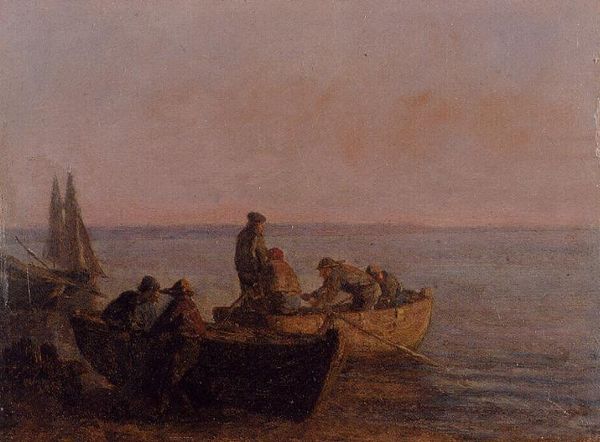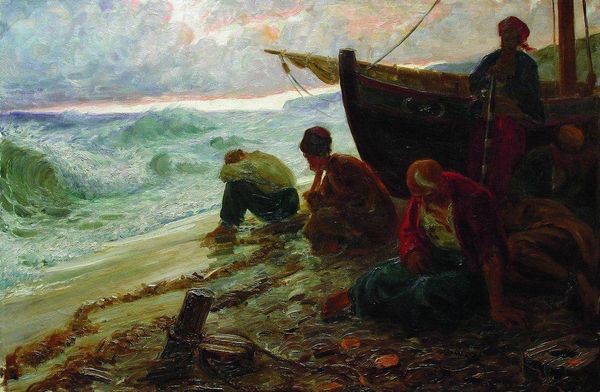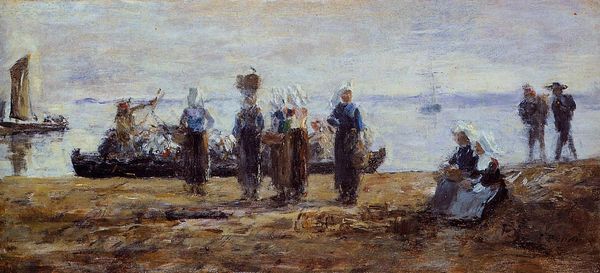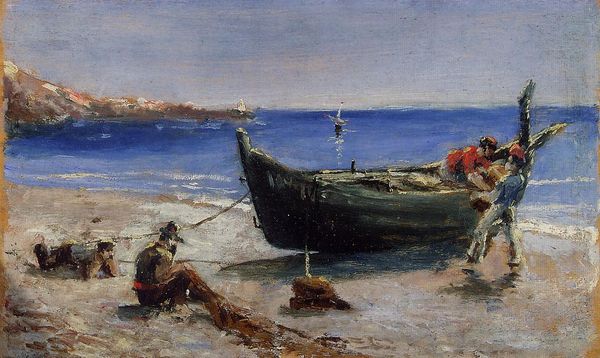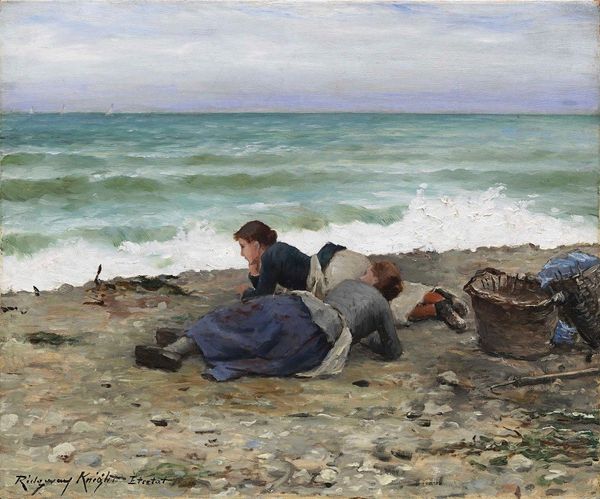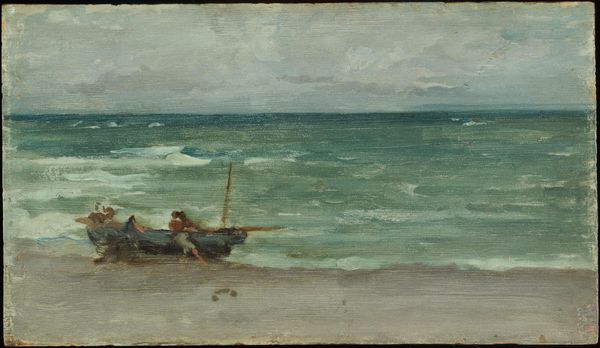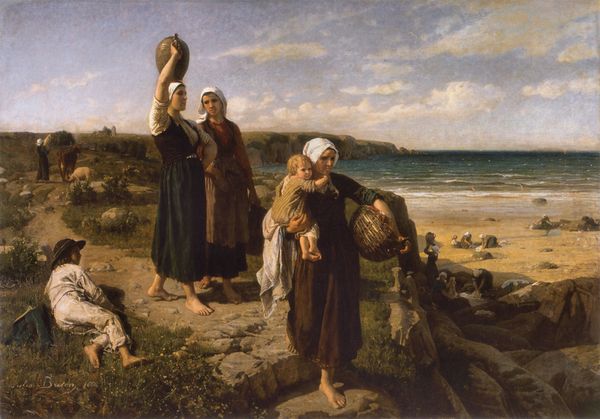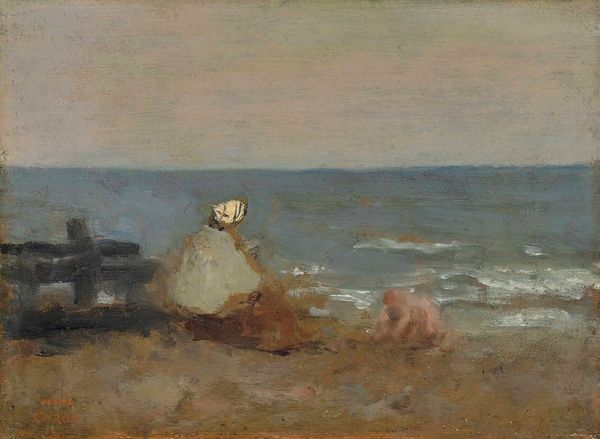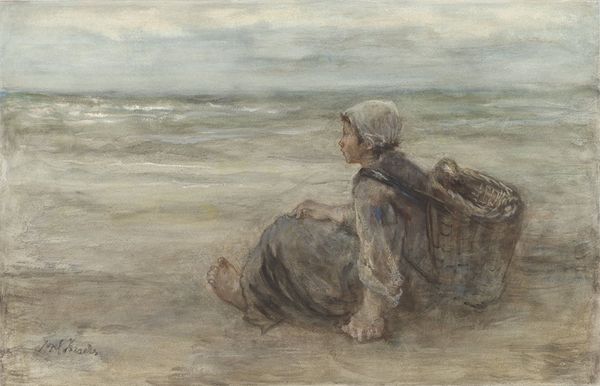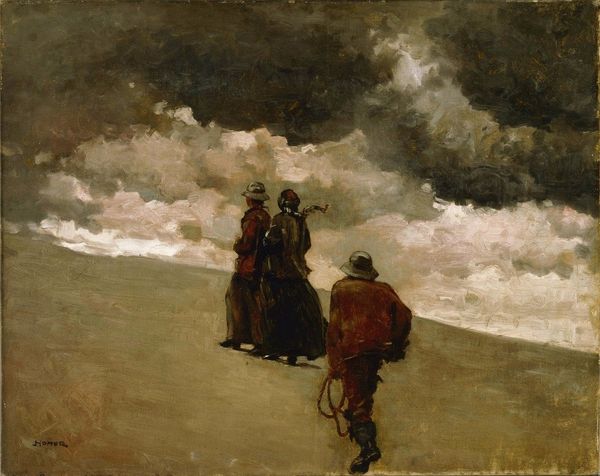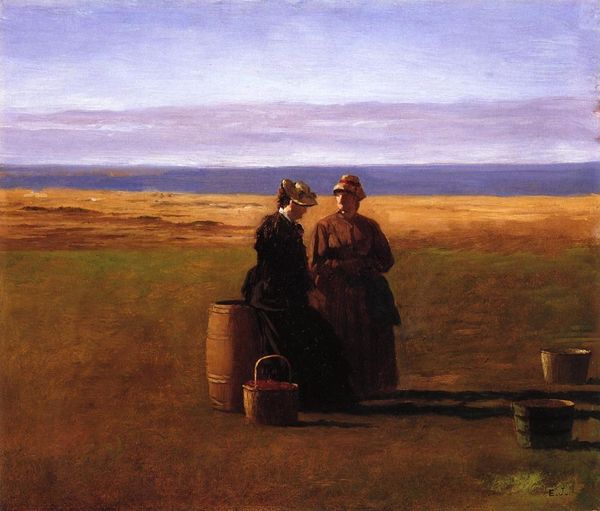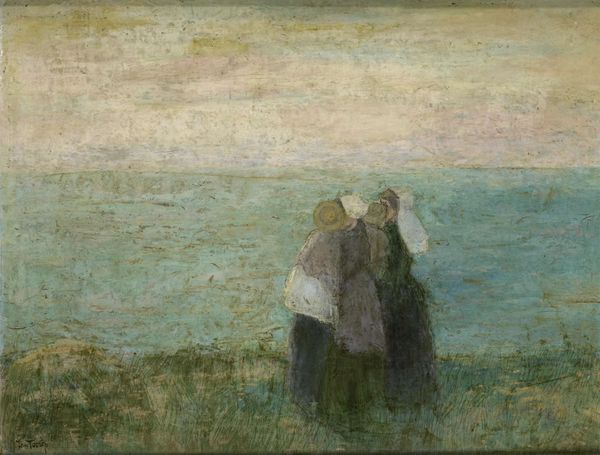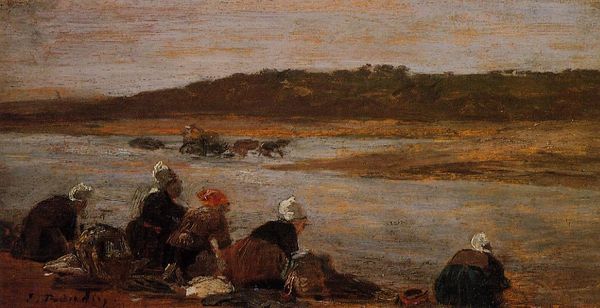
Copyright: Public domain
Editor: So, here we have Ferdinand du Puigaudeau's "Shrimp Fisherwoman" from 1891, rendered with oil paints. I'm immediately struck by the kind of muted, earthy tones... there's a certain solemnity, a weightiness. What do you see in this piece? Curator: It whispers stories of resilience, doesn't it? Those figures, bent against the wind, trudging towards the sea. I see more than just shrimp fishers; I see echoes of Van Gogh's peasants, Millet's gleaners - a kind of noble struggle embedded in the everyday. Have you noticed how the horizon line sits so low? Editor: Yeah, it kind of emphasizes the vastness of the sky and, I guess, the landscape that these women are part of. It’s very grounding. Curator: Exactly. And that's what makes it more than just a genre painting, wouldn't you say? Think about the post-impressionists, playing with perspective and color to capture not just what they saw, but how they *felt*. This piece has that… raw emotional honesty. Do you find the impasto brushstrokes adds anything to it? Editor: Now that you point it out, that rough texture seems to echo the harshness of their labor… and the scene around them. Curator: It does, it speaks to the haptic. It’s like Puigaudeau wants us to *feel* the grit and the salt spray. The composition also emphasizes the endless journey; those women almost dissolve into the landscape! Editor: I see that now! I had initially seen a muted scene, but this actually celebrates perseverance. I had been too quick to judge, seeing it as bland because of the muted tones, rather than appreciating it. Curator: And that's the beautiful dance with art, isn't it? Allowing a painting to challenge our assumptions, to reveal its layers slowly... Now I look again, I wonder what we lose by never experiencing that kind of labor firsthand...
Comments
No comments
Be the first to comment and join the conversation on the ultimate creative platform.
